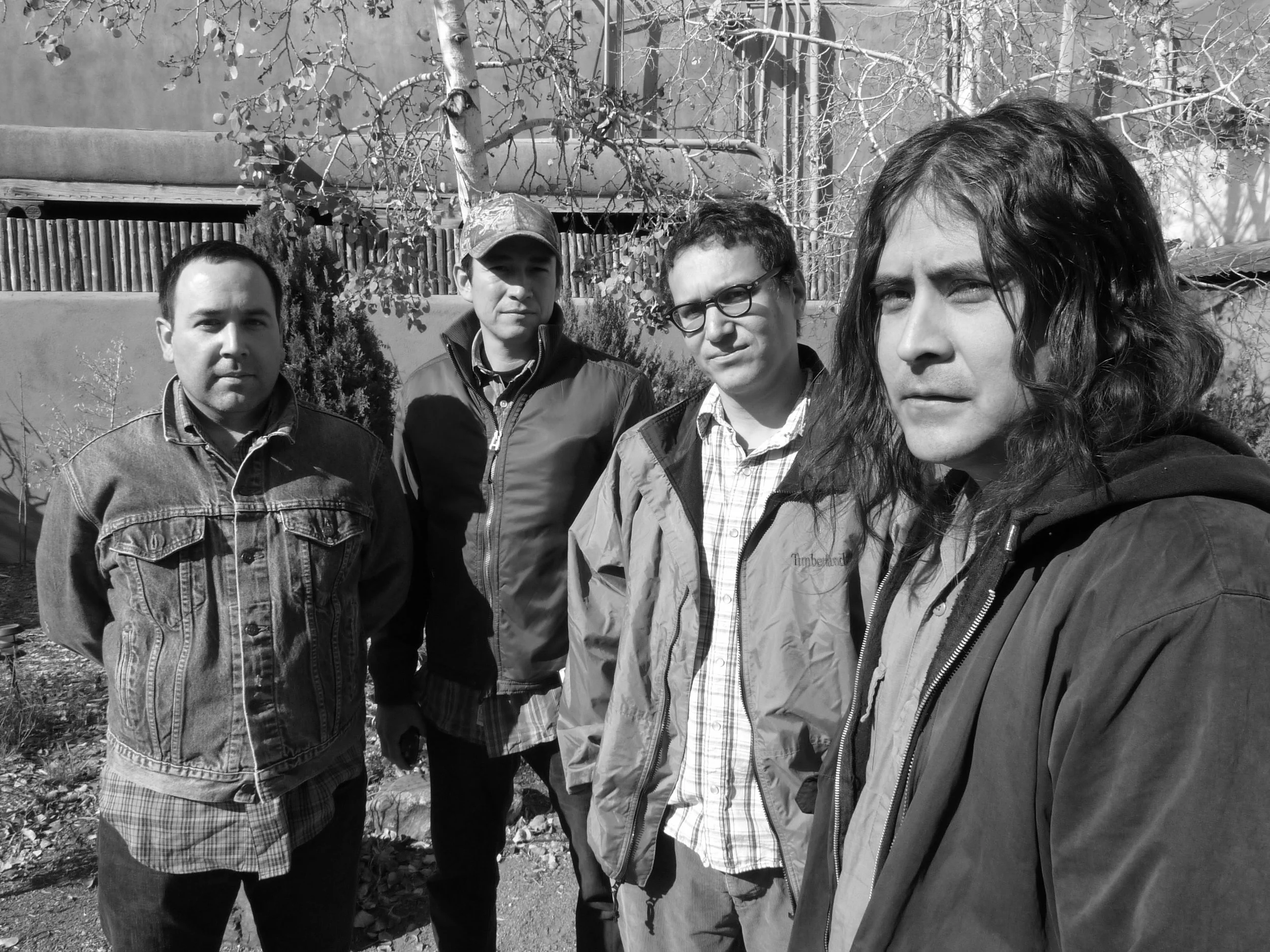POSTCOMMODITY
Postcommodity was initially formed in 2007 by Nathan Young (Delaware/Kiowa/Pawnee), Kade L. Twist (Cherokee), and me. We were all friends outside of the collective and each came from very different backgrounds. At the time, I had the most experience exhibiting and producing artwork, as well as managing the practical aspects that come with art production. Kade was working in political consulting and policy with indigenous communities, while Nathan was producing films for indigenous communities. Both Kade and Nathan were also involved in sound and noise music, and it was through that network that we eventually met the artist Raven Chacon (Navajo), who joined I 2008.
Together, we began creating work that was changing to advance decolonization and Indigenous cultural self-determination within a global climate of instability, ethnocentric violence and neoliberalism, challenging the global market, dominant belief systems, and the accelerating forces of colonization.
This early period of our collaboration represents the core of what I contributed to Postcommodity.
2007 Center For The Future: Residency and Exhibition, Slavonice, Czech Republic,
Intersections
Various found materials, plastic, cement bricks, wood, lamps

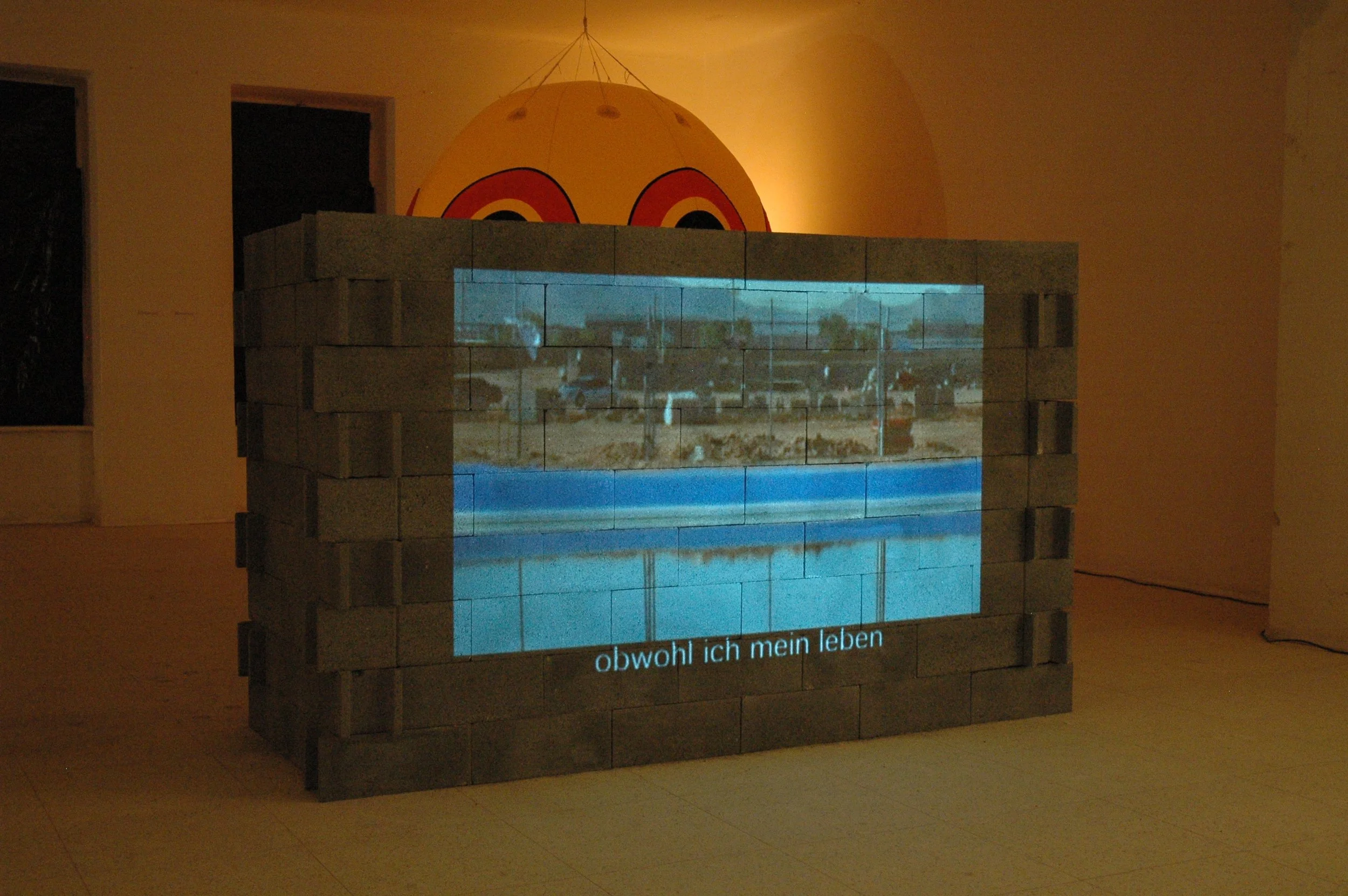
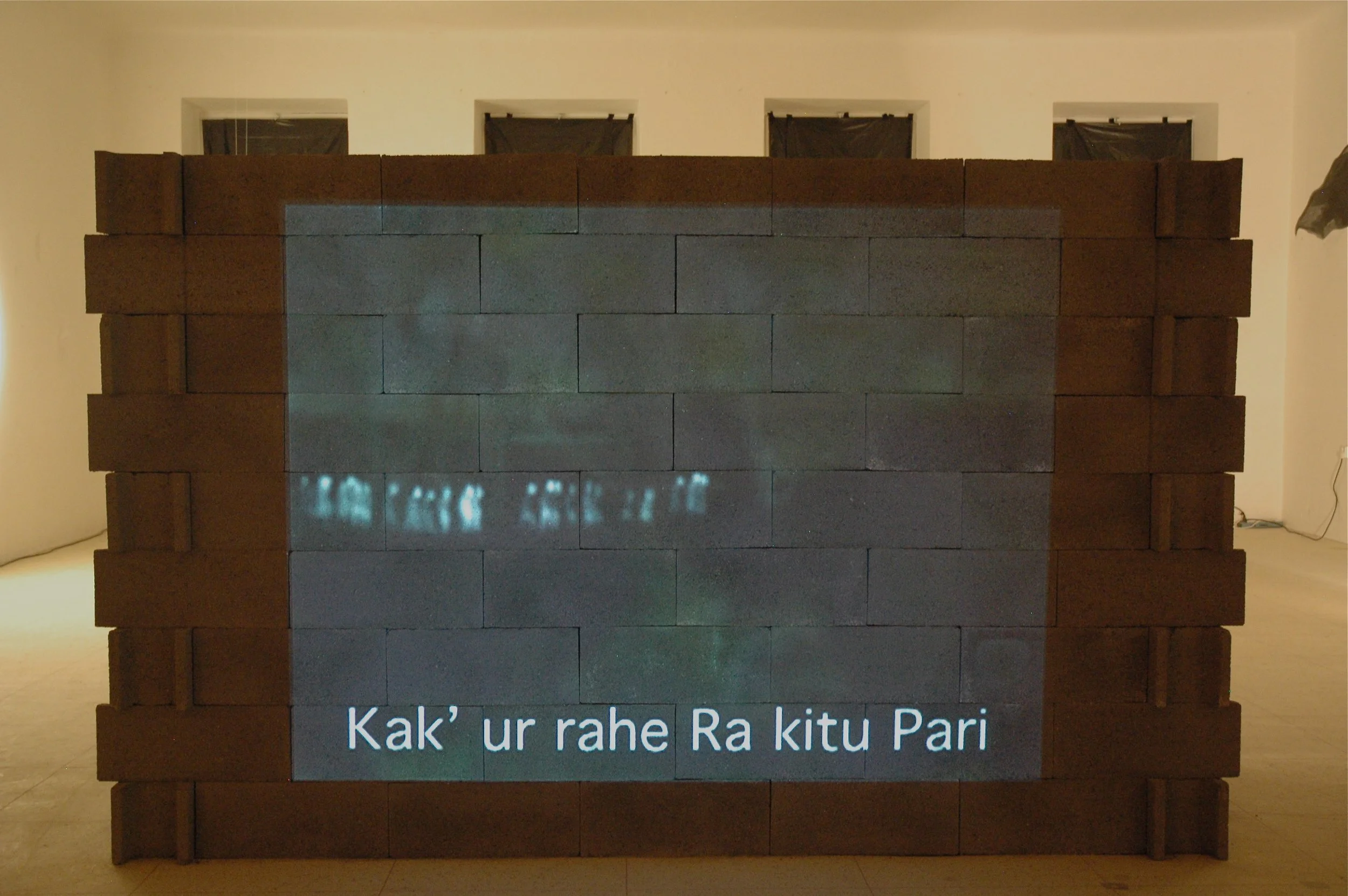
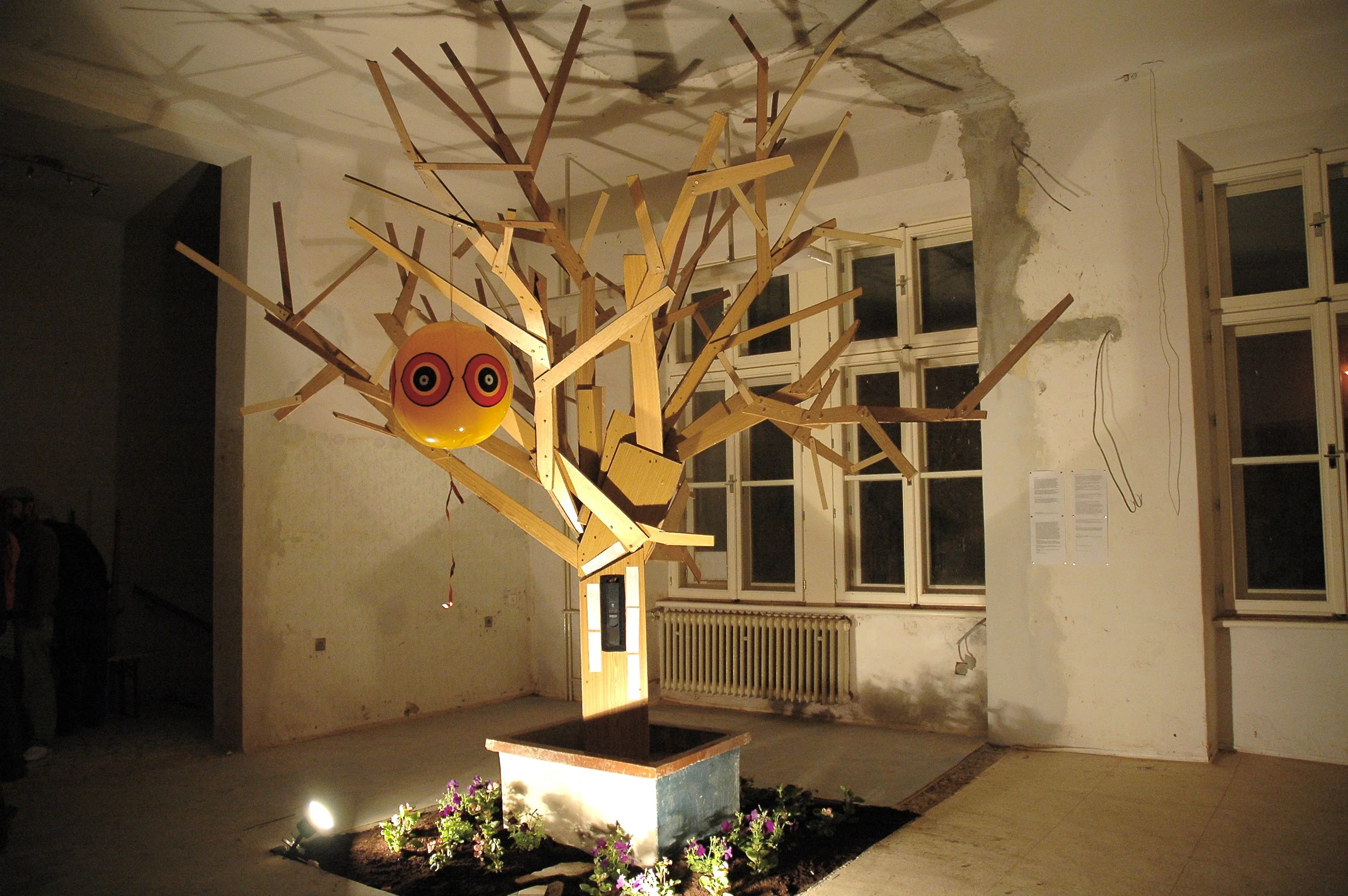

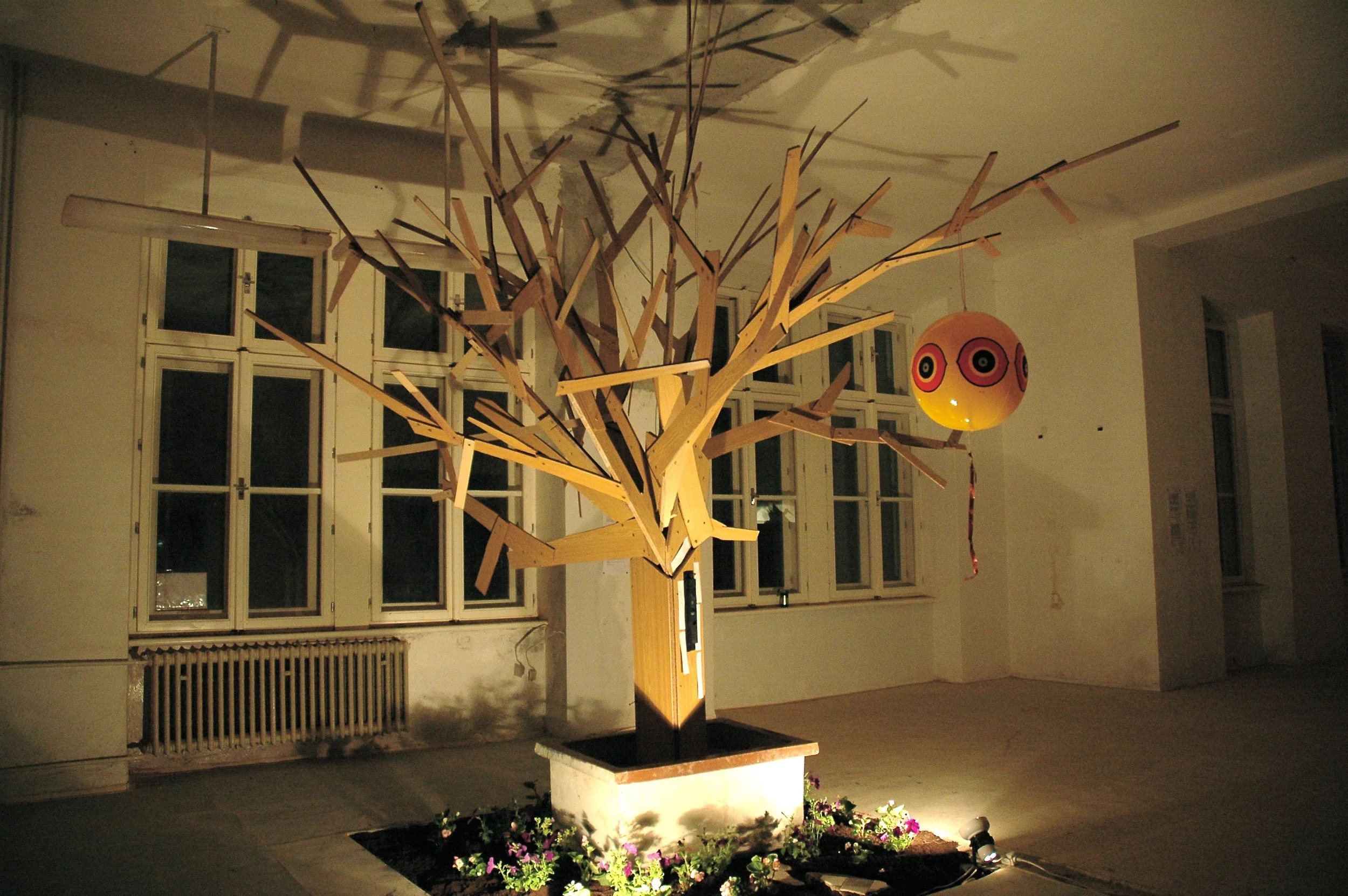
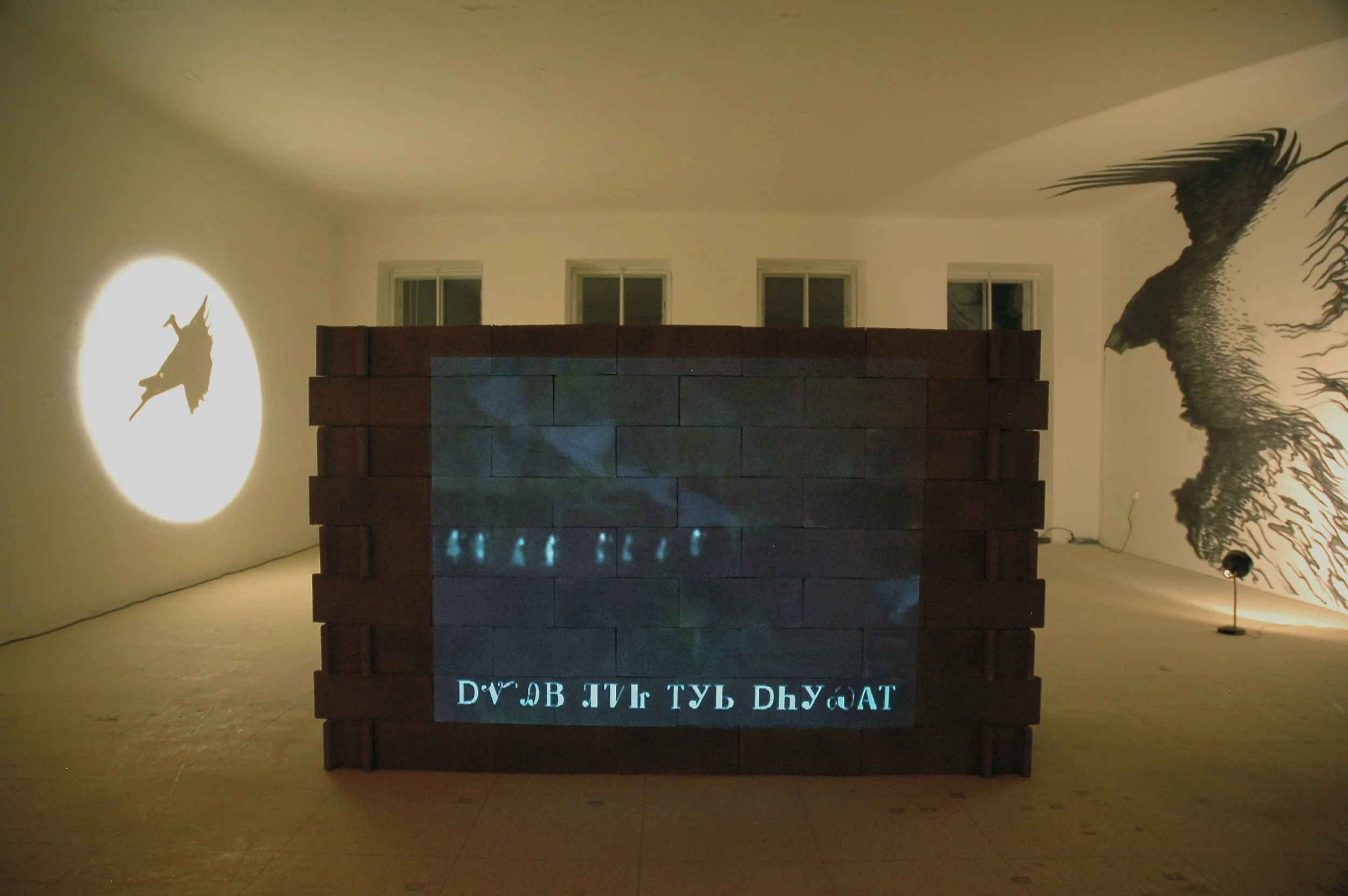
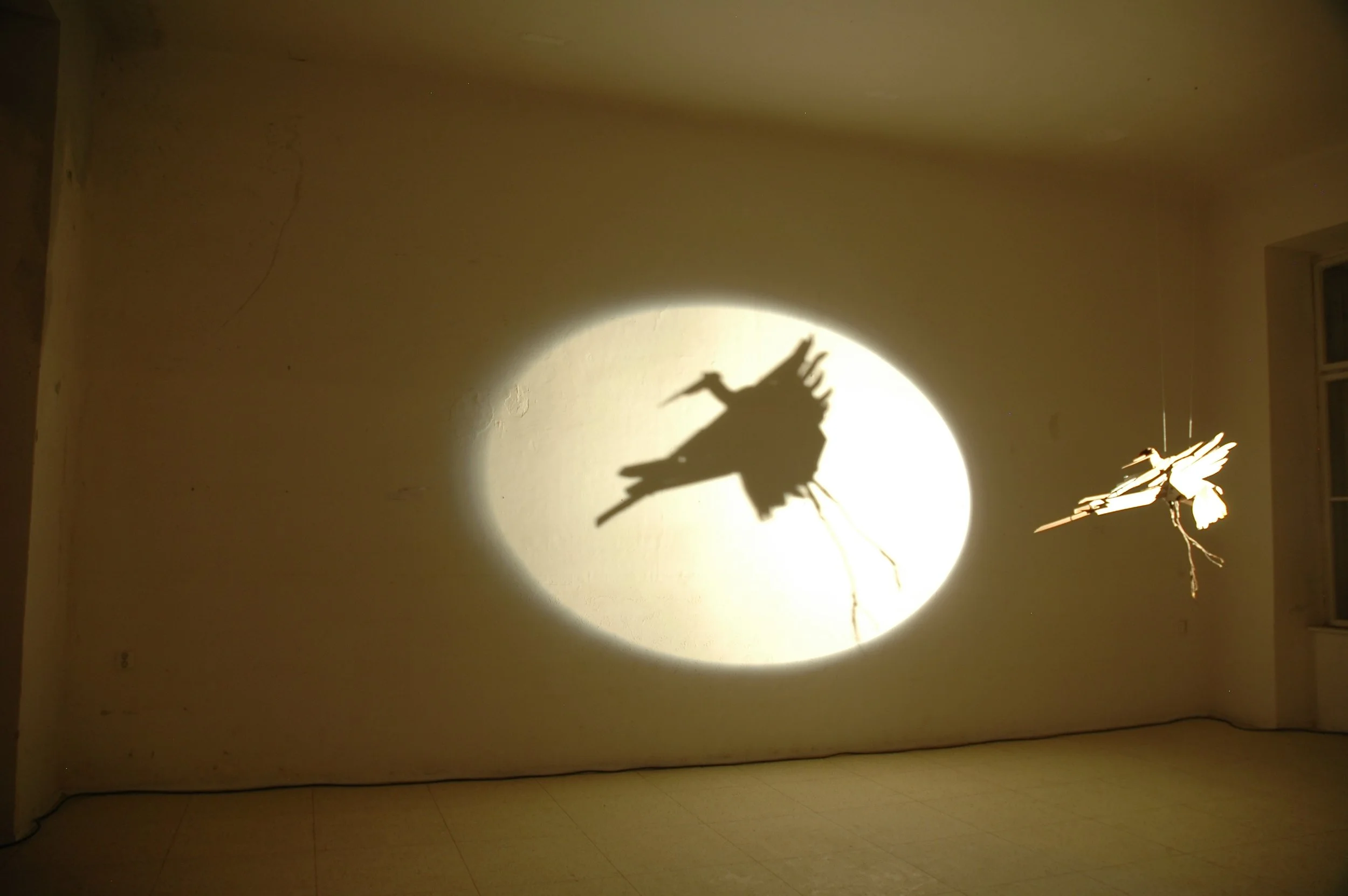
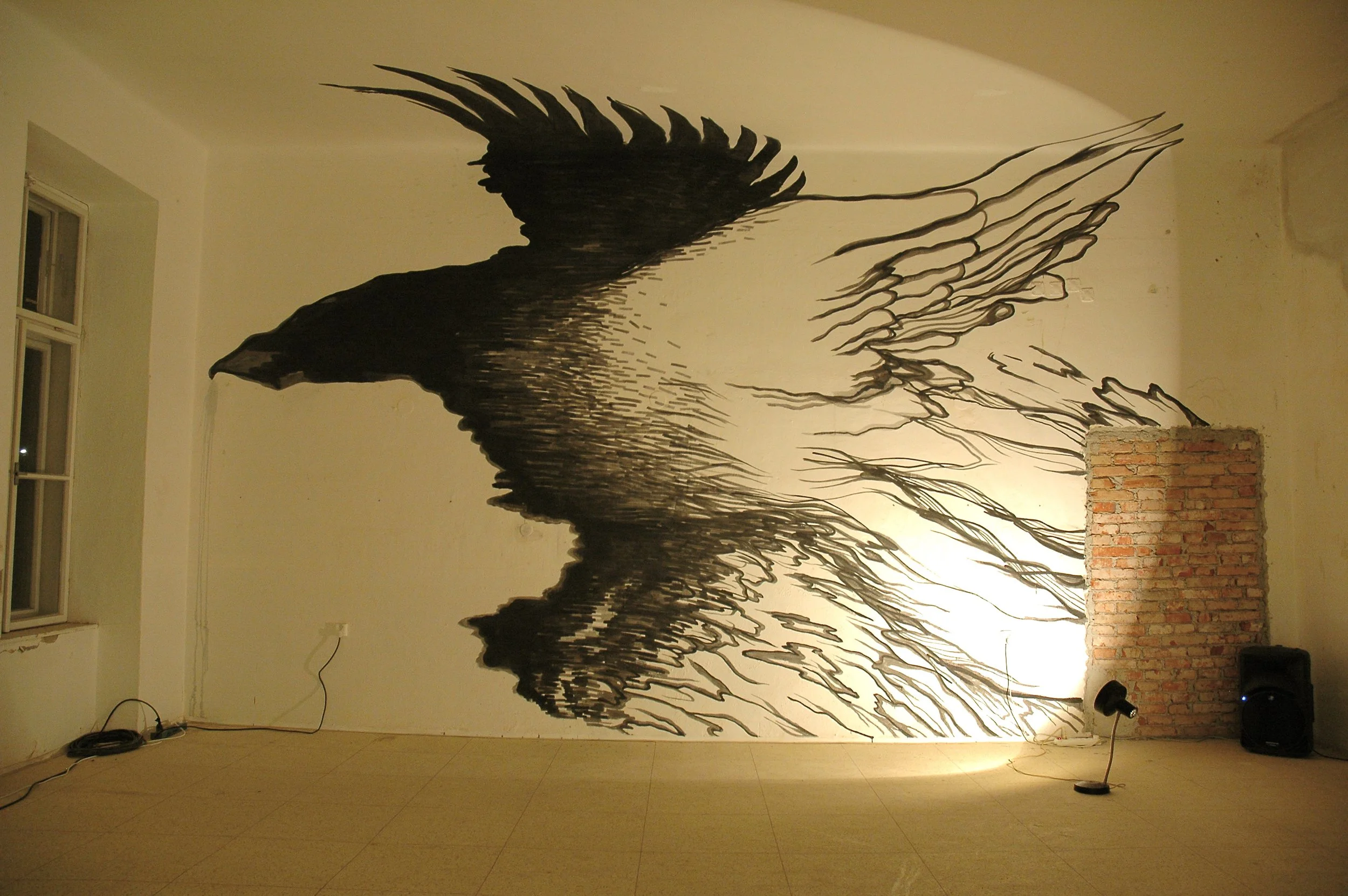
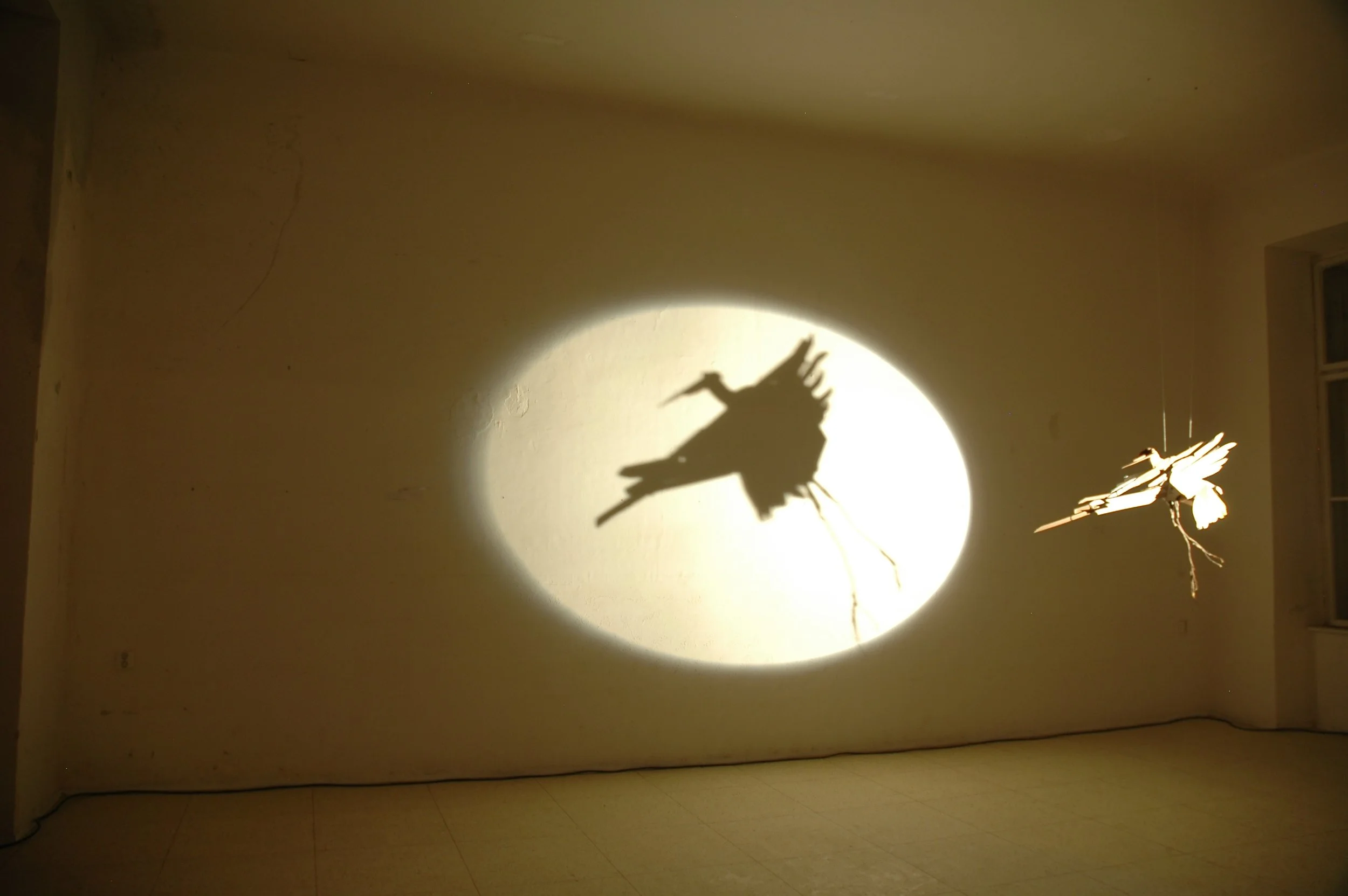
2009 Phoenix, Arizona
Dead River
Action, installation, community collaboration (Existence A.D.,)
Dead River responds to “Thoughts of an Ancient Indian Spirit”, text etched in stone that wrapped around a meditation garden near the Steele Indian School Park, Phoenix Arizona. The text was intended to pay homage to the Phoenix Indian School (operated from 1891 to 1990). There was no author associated with the enscibed text.
Postcommodity worked with Existence A.D., a Phoenix based Indian metal band, to develop a song that incorporates text from the park’s design features attributed as being the “Thoughts of an Ancient Indian Spirit.” The video of Existence AD performing this song is projected on a wall (12 ft. x 9 ft.) adjacent to the VIP lounge (22 ft. x 22 ft.) created for the band, their guests and select gallery visitors they allow into the space, which is partitioned from the rest of the exhibition space with stanchions. The work provides an intervention of cultural self-determination that re-contextualizes and decolonizes the park’s institutional narrative.

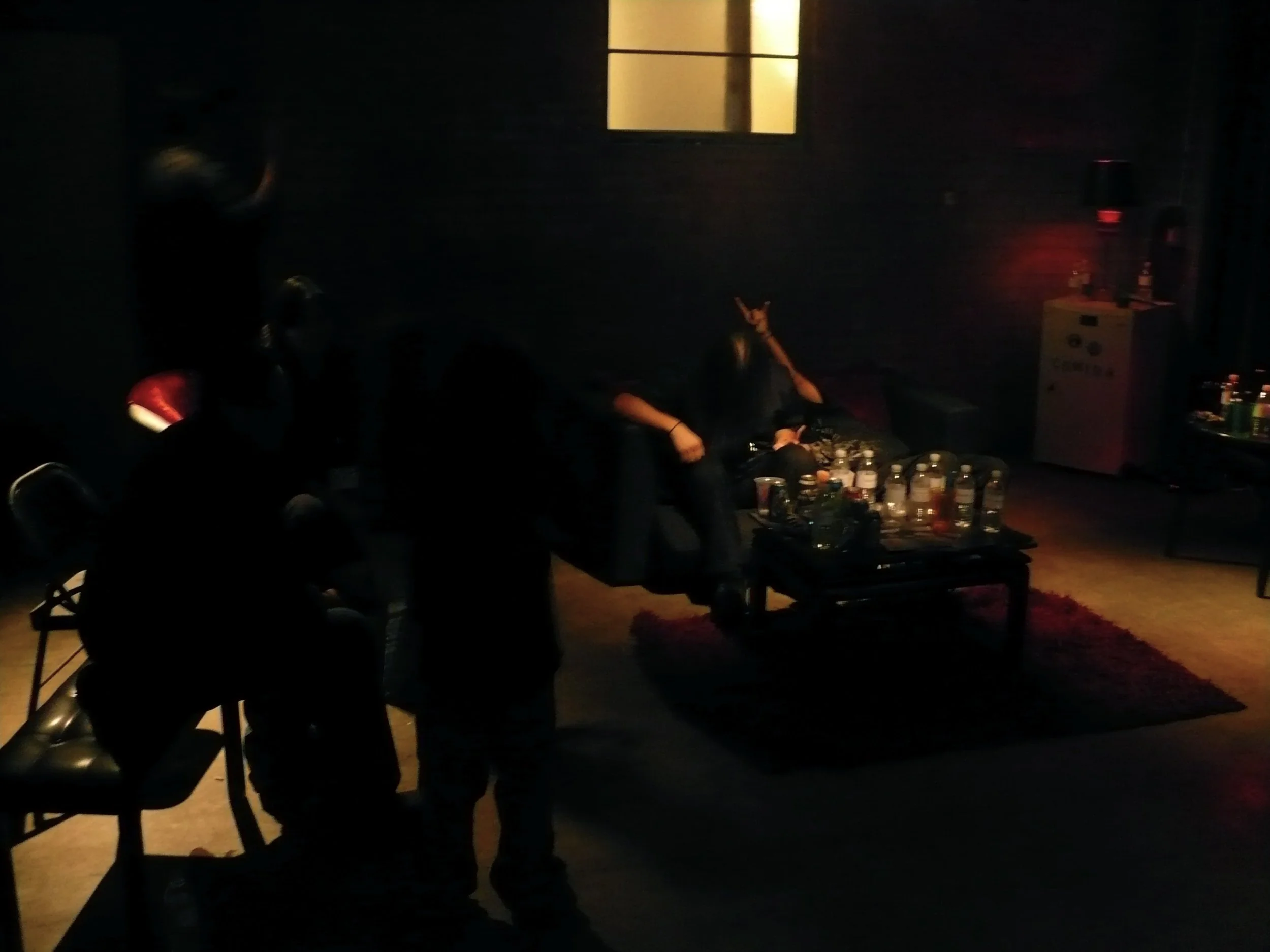


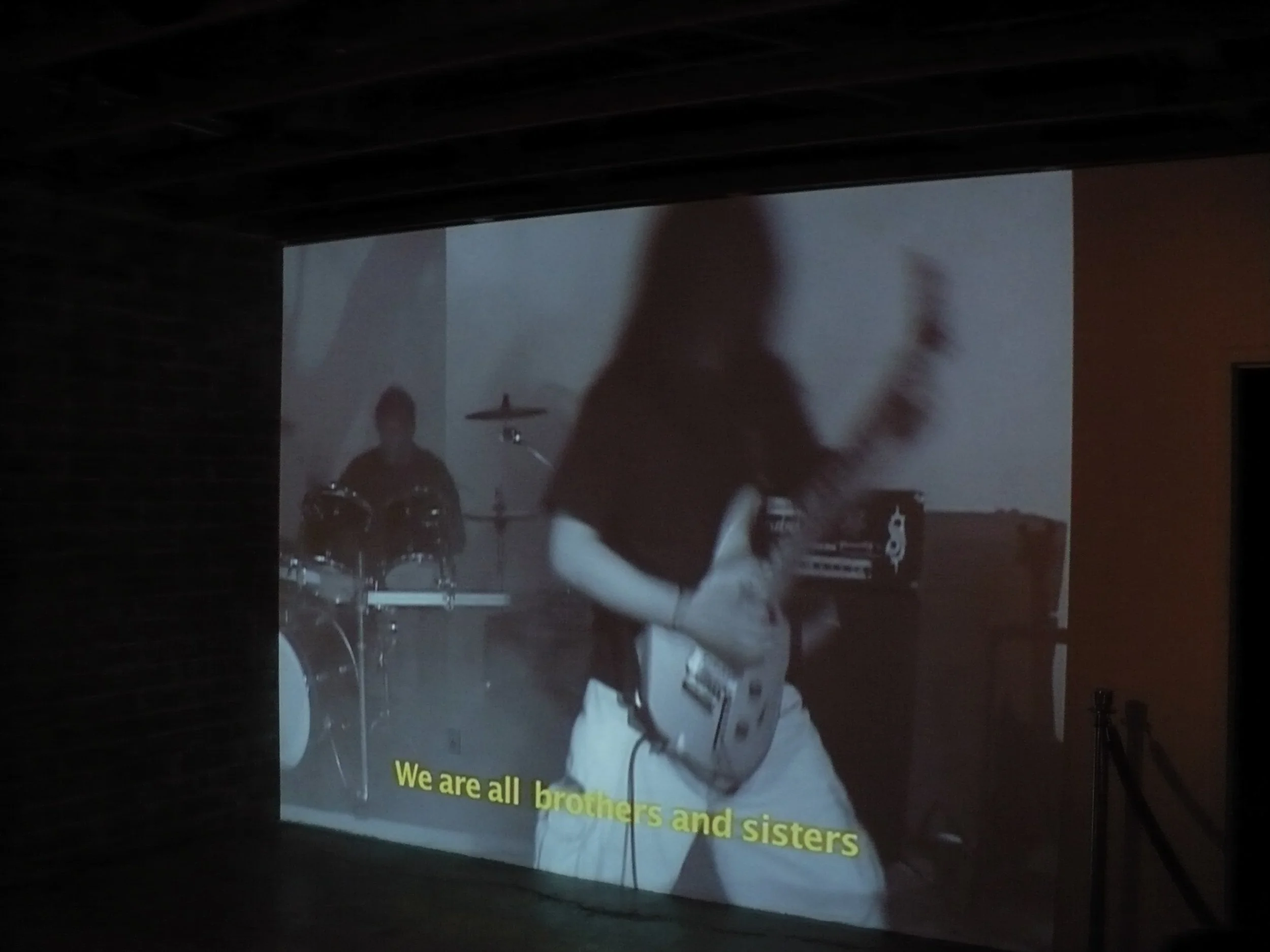

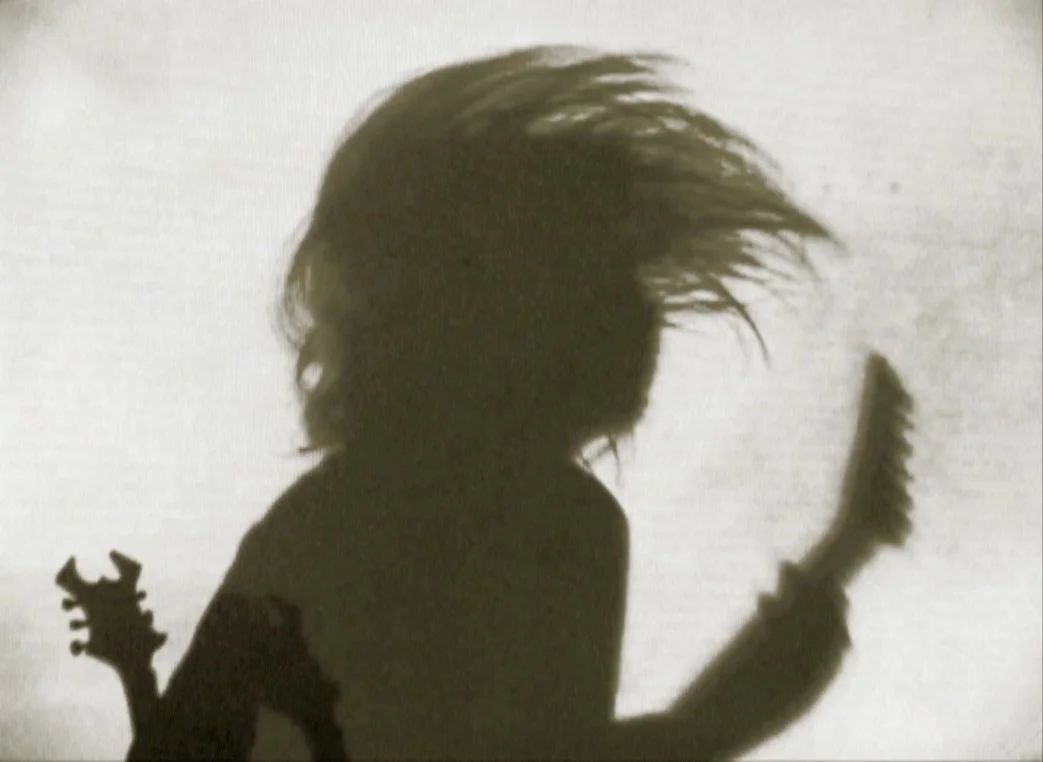
the Subject of Sustainability, and the Elephant in the Room
This land beneath the concrete, buildings and infrastructure that support this institution is part of a larger geographic and ecological system that is intrinsically connected with the Hohokam people of the past, and the Akimel O'Otham and Pee Posh people of the present. It has been this way since time immemorial. Arizona State University was literally built on top of the undisclosed secrets of Indigenous knowledge and the cultural identity of countless generations of these Indigenous people. However, as the university has matured and developed aspirations of being the regional hub for the advancement the Western scientific worldview in the 21st Century, it has left in its wake an institutional narrative that has failed to appropriately acknowledge the long-standing spiritual, cultural, economic and political connection that the Indigenous people surrounding the university have with this land, historically and contemporarily.
Now, this institution has committed itself to being at the forefront of sustainability studies -- a theoretical, interdisciplinary methodology and system of aesthetics born out of the Western imagination and the conceptual framework of supply and demand (and implosion of neoliberalism). The university has become an active participant in the academic gold rush to connect science with industry and policy development to more efficiently commodify the resources of our shared future -- Indigenous land and natural resources (particularly water). Unfortunately, the university has failed to meaningfully include Indigenous leaders and Indigenous perspectives within their sustainability discourse, even though Indigenous resources are, inevitably, at stake.
Until this point, the university has failed to look beyond the conceptual framework of the Western scientific worldview. It has been attempting to solve a problem generated by the Western scientific worldview with solutions generated from the same conceptual framework. In the process, it is contributing to the propagation of a devastating feedback loop. Meanwhile, the Indigenous leaders who have been relegated to the sidelines of sustainability discourse offer a conceptual framework and worldview outside of this feedback loop. The Akimel O'Otham and Pee Posh have developed invaluable, holistic systems of knowledge and culture for sustainable living within this geographic and ecological system. Their meaningful inclusion within sustainability discourse offers hope for relevant outcomes that move away from the commodification of “sustainability,” itself. More important, it opens the door to the appropriate utilization of intercultural, applied knowledge -- Western and Indigenous -- to successfully address the enormous sustainability challenges that we all face.
2009 Do You Remember When?, Arizona State University Ceramics Research Center, Tempe, Arizona
Mixed-media installation (cut concrete, exposed earth, light, sound).
For this site-specific installation and intervention, Postcommodity will cut a 4’x4’ hole in the center of the gallery floor and expose the earth beneath the institution, then display the block of removed concrete, standing upright, on a pedestal. Both the hole and the block of concrete on the pedestal will be illuminated with theatrical lighting. In addition, a manipulated audio recording of a Pee Posh social dance song performed by the collective, matched with a treated closed-circuit audio broadcast, will activate the physical space of the gallery and accompany the installation.
With Do You Remember When?, the hole and exposed earth become a spiritual, cultural and physical portal -- or point of transformation between worlds -- for the emergence of an Indigenous worldview within sustainability discourse regionally, nationally and internationally. The block of concrete -- a cross-section from the foundation of the university -- functions as a trophy celebrating an Indigenous intervention against the Western scientific worldview, while honoring Indigenous knowledge pertaining to sustainable living within this geographic and ecological system. The audio recording provides the psychosocial soundtrack of the transformation process. Collectively, the site-specific work and engages the gallery space, the adjacent university, and the region in a manner that seeks to shift sustainability discourse from a focus dominated by science, to a more balanced approach that is inclusive of issues pertaining to worldview and Indigenous knowledge systems.
Do You Remember When?, and ASU's institutional support for the work, carry an important message about the art, culture and politics that surround sustainability discourse and the spirit of Indigenous/non-Indigenous collaboration and cooperation that Postcommodity and ASU are facilitating. Our hope is that this installation and intervention, and the process and purpose in which it is being realized, will positively impact the nature of sustainability discourse regionally, nationally and internationally.






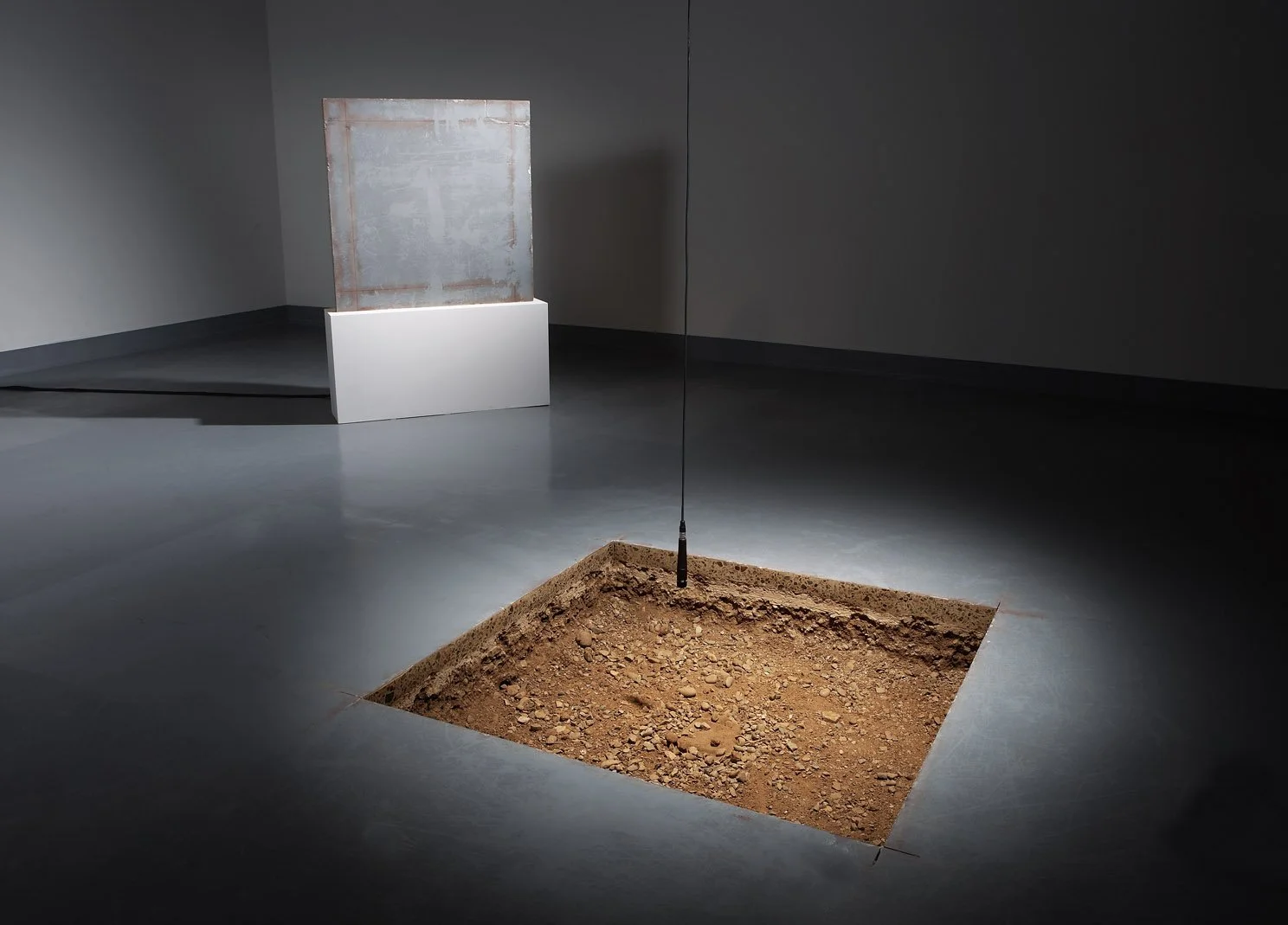
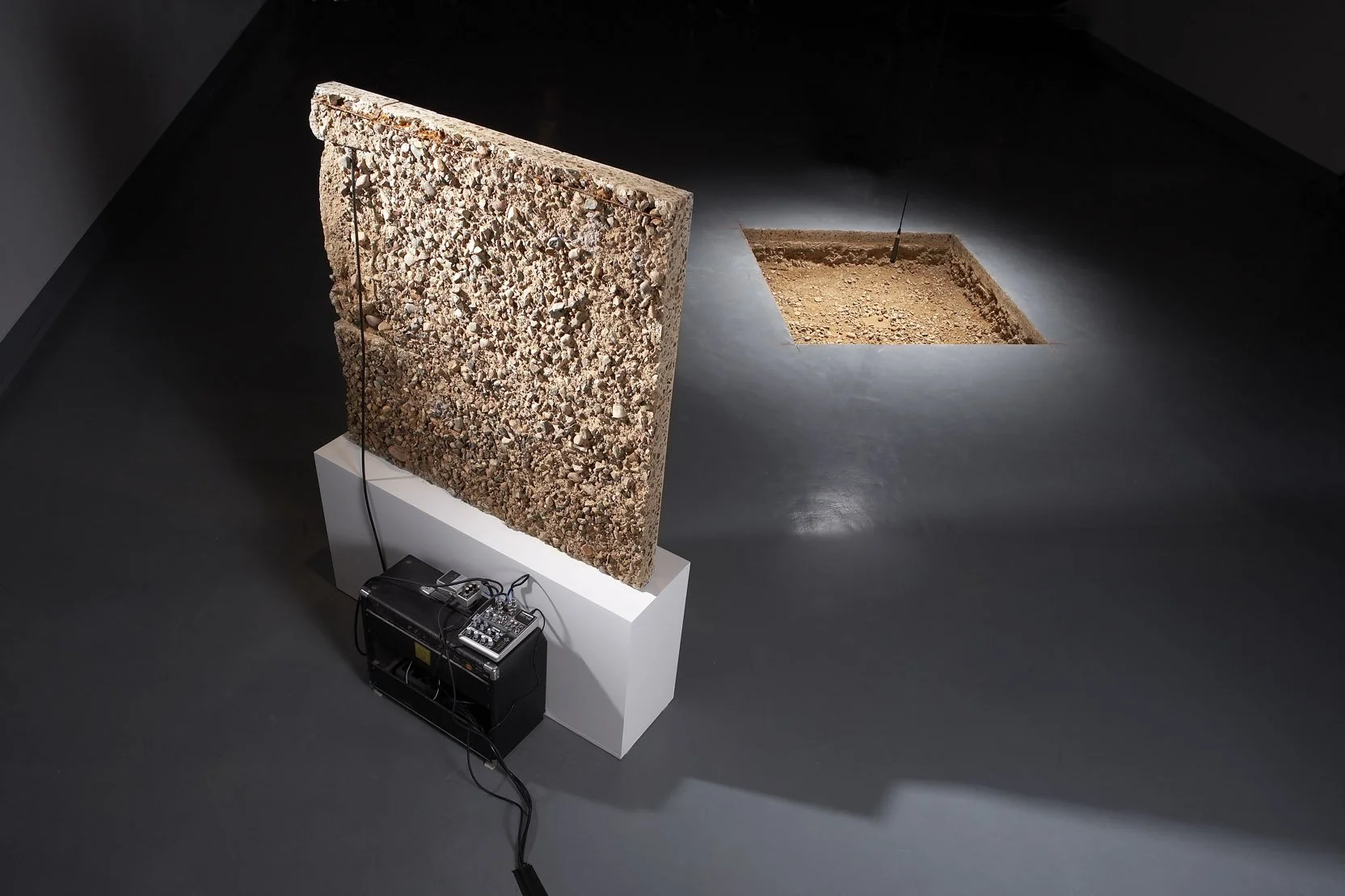
2009 Scare Eye Balloon Over Phoenix, Phoenix, Arizona
Custom 10’ (diameter) Ballon, Rope, Helium







Sustainability:
For the Sake of Our Land, Culture, Community
Shra-hahtse kuudzeniah.
Shrow-yugaiyishi kuudzeniah.
Shra-ahshteetrah kuudzeniah.
The words of Iatiku, Earth/Land Mother:
Ten times upon ten times upon ten times upon ten times of years.
And then again ten times of ten times upon ten times of years into the past.
I am there.
Our voices, our experiences, our knowledges come from the land-earth.
There is no other source or origin or sustenance that our lives have.
From there, we come as living beings, thriving with the earth-land.
Thriving as peoples, plants, animals, insects, fishes, trees, all thriving.
In mountains, deserts, swamps, forests, prairies, oceans, all terrains.
The wonder and awe of knowledges apparent always and ever to us.
All our needs as peoples, plants, animals, insects, fishes, trees are met.
Creative forces, energies, illuminations, and even darknesses existent too.
And our guiding Kahtzina, Yei, Spirits always present as wonder and awe.
The words of Iatiku, Earth/Land Woman:
Ten times upon ten times upon ten times upon ten times of years.
And then again ten times of ten times upon ten times of years within the present.
I am here.
Our stories, our consequences, our continuations always return us.
We do not have another choice but to be heedful and grateful always.
As living beings, we thrive because of what we receive from sacred land.
We have no choice as peoples, plants, animals, insects, fishes, trees, all things.
In communities and relationships and responsibilities, in wonder and in awe.
Understanding and acceptance are ours when we live obligations as ours.
Our needs as living beings are met only when we know and live obligations.
That’s what our experiences have always been; we call it natural sacred law.
To forget and to neglect and to disregard it is to lose sacred wonder and awe.
The words of Iatiku, Earth/Land Sustainer:
Ten times upon ten times upon ten times upon ten times of years.
And then again ten times of ten times upon ten times of years into the future.
I am there.
Simon J. Ortiz
Copyright 2009
2009 Worldview Manipulation Therapy, Ice House, Phoenix, Arizona
Multichannel video, sound and mixed-media installation. Duration: 12 Hours.
Installation views, The Ice House, Phoenix, AZ.
Worldview Manipulation Therapy draws upon the ephemeral, transformative and esoteric aspects of tribal ceremonies central to the Indigenous worldview as a means of examining contemporary postcolonial tensions driven by globalization and neoliberalism. The centerpiece is a sculptural graphic score that articulated the sonic feedback and performance accompanying the installation through traditional tribal geometries. The materials used to create the sculptural graphic score informed the re-imagined ceremony. Coal is symbolic of the destructive extraction of fossil fuels from tribal lands. Salt is symbolic of tribal salt migration pathways that have been eliminated by development. Rock from the dead Gila River, run dry by the demands of unsustainable population- growth.
The installations featured in the exhibition, produced collaboratively by the Postcommodity artists, range from large-scale, mixed-media work to immersive environments of video, light and sound. The exhibition spans more than 10,000 feet of floor space and represents the collective’s most ambitious work to date.
Worldview Manipulation Therapy demonstrates the relevancy of Indigenous expression within the larger sphere of contemporary art, and provides an important statement of Indigenous cultural self-determination.




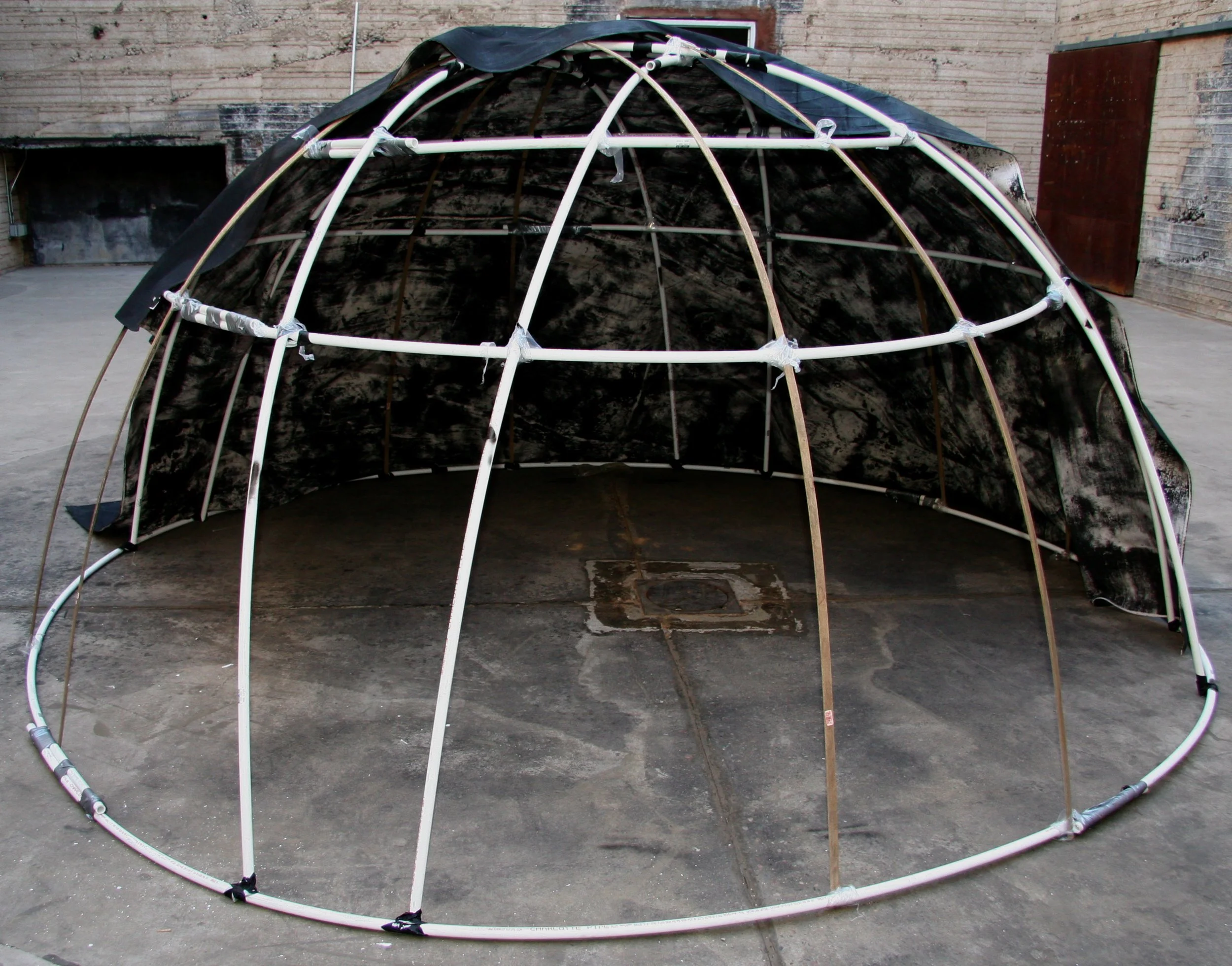




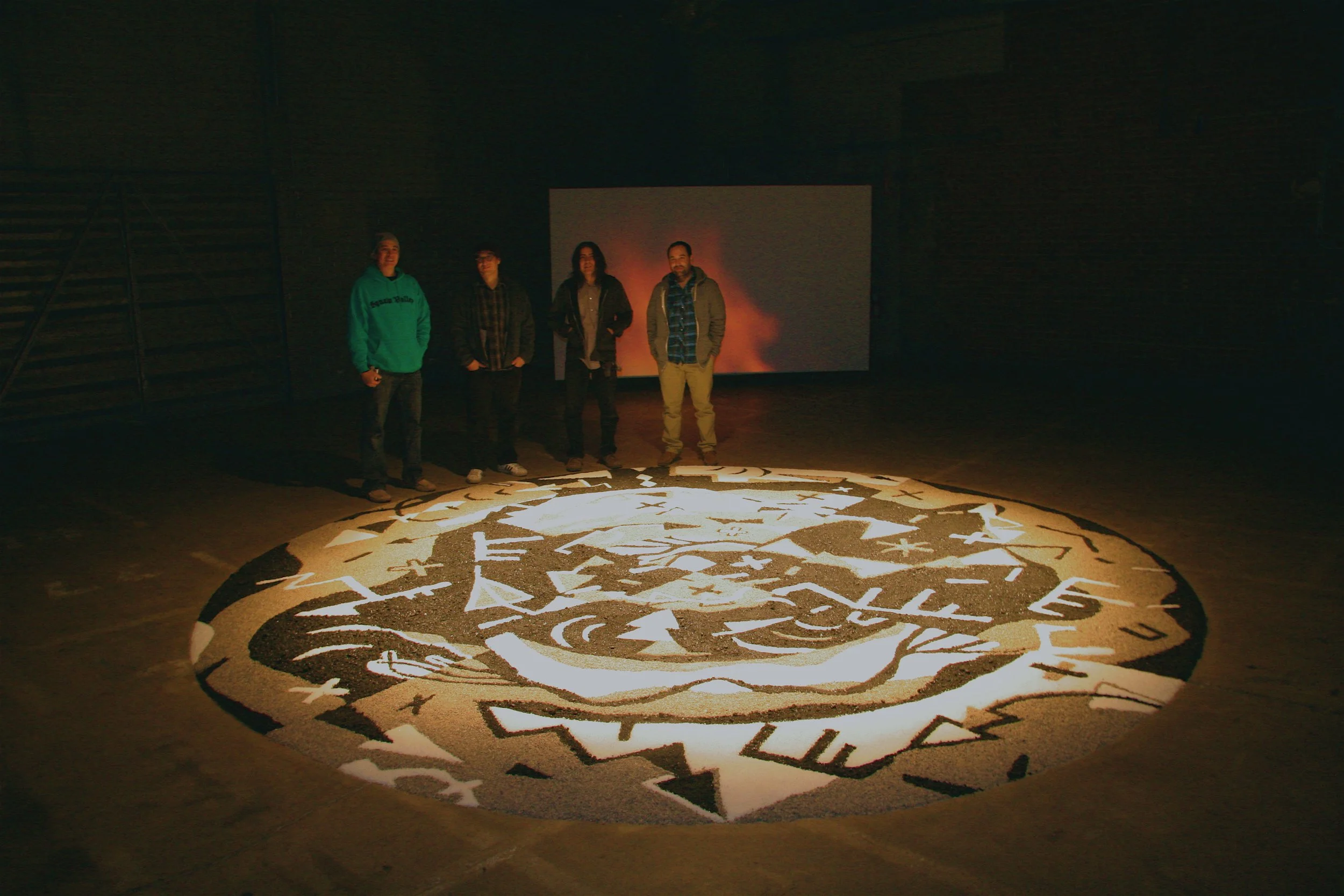

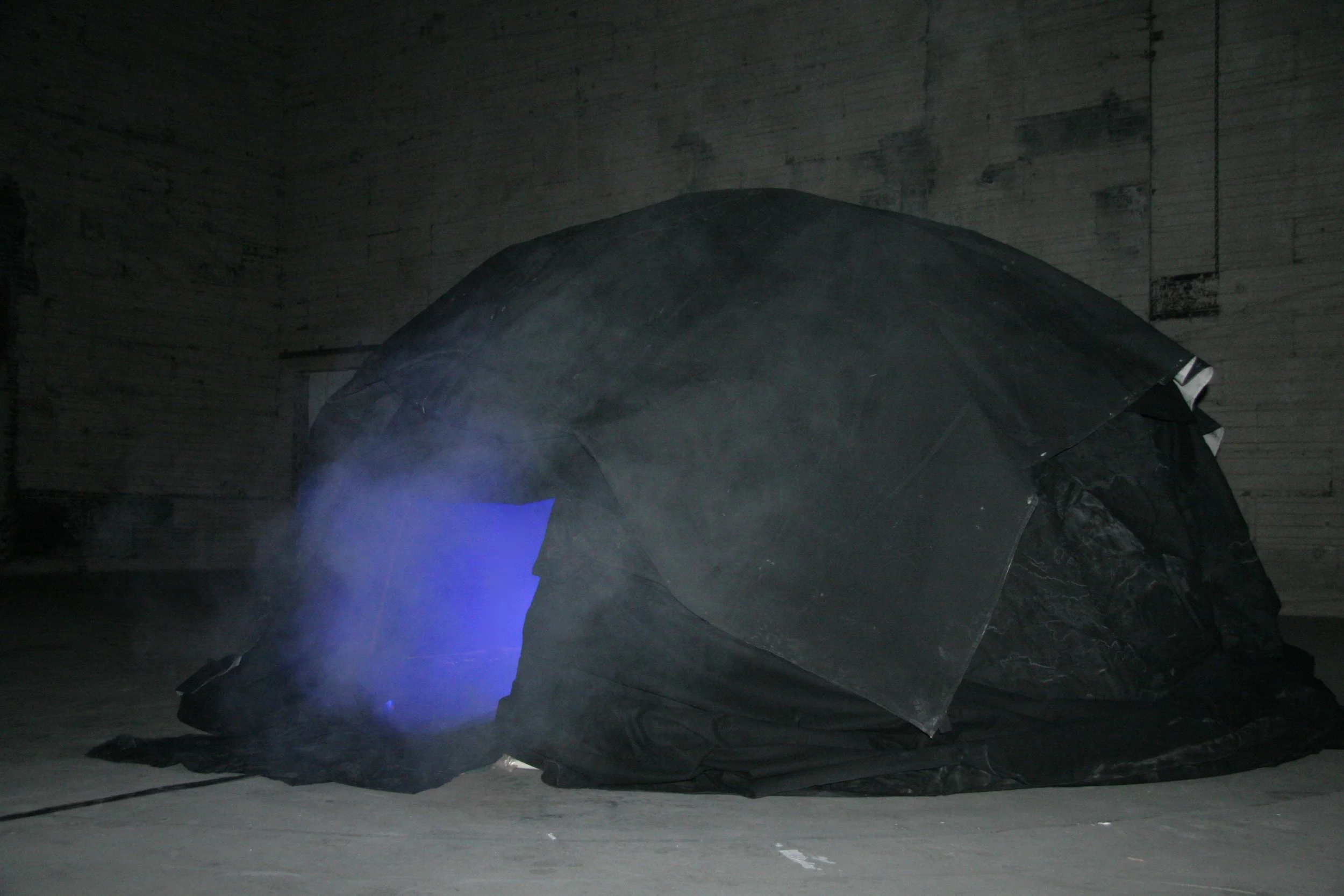

2010 Museum of Contemporary Native Arts, Santa Fe, New Mexico
If History Moves At the Speed of its Weapons, Then the Shape of the Arrow is Changing
The installation is a sonic ambush utilizing four Pueblo Revolt era weapons (bow and arrow, atlatl and dart, sling and rock, and war club). We have performed a ballistic analysis for each weapon that includes all potential impact points within the gallery, providing a comprehensive mathematical analysis of multiple ambush scenarios. From this data algorithms were derived to inform sound compositions specific to each weapon. The result is a dynamic and interactive installation entirely informed by the inherent physical, cultural and intermediary properties of each weapon. The sound filling the room becomes the medium for the weapons themselves to physically engage and envelop
2010 Museum of Contemporary Native Arts, Santa Fe, New Mexico
Installation P'oe iwe navi ûnp'oe dinmuu (My Blood is in the Water)
The work morializes mule deer as a mediator of this landscape and pays tribute to the process through which Indigenous people put food on the table -- which itself is an act of decolonization in contrast to the way food and the spirit world are imagined and perceived by the dominant culture. The work also functions as an act of defiance against market-driven expectations of Indigenous aesthetics and Indigenous art. Instead of presenting the commodified beauty of an Indian rug, jewelry, pottery or painting, we are confronting audiences with an installation that exists outside of the colonizer's conceptual framework of commodity, or cultural fetish. To the contrary, we are offering a pure semiotic vehicle of Indigenous cultural self-determination that is spiritually and physically connected with the regional landscape and its Indigenous people.
2010 Museum of Contemporary Native Arts, Santa Fe, New Mexico
It's My Second Home, But I have a Very Spiritual Connection With This Place
functions as an ethereal meditation on the ebb and flow of the marketplace, the environment, and its actors. It is an interactive and performative work that reveals the longitudinal flow of land, people and commerce within the Santa Fe region by examining these shifting relationships as they are manifested on tribal lands, the City of Santa Fe, and the property holdings of speculative movers and shakers. The work provides a means for exploring potential


